
Continuing a Vision for Better Crops: The Legacy of Dr. Steve Long
Dr. Steve Long’s spent his career trying to answer a simple question: how can plants work a little harder to improve food security and mitigate climate change?
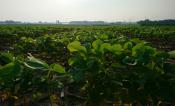
Traditional breeding falls short in boosting soybean photosynthesis
A RIPE team from the University of Illinois has determined that improving a crucial component of soybean photosynthesis is unlikely to come from traditional breeding methods, and that gene editing is likely the key to unlocking soybean potential.
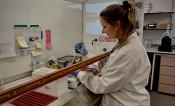
Unlocking crop efficiency: A practical guide for Rubisco Assays
RIPE researchers from Lancaster University wrote a chapter in the latest volume of Methods in Enzymology providing a protocol for using radiometric assays to measure Rubisco in plant leaves.
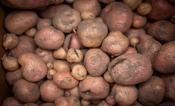
Climate-ready crop: RIPE team shows increase in food mass through photorespiratory bypass in elevated temperatures
A team from the University of Illinois has engineered potato to be more resilient to global warming showing 30% increases in tuber mass under heatwave conditions. This adaptation may provide greater food security for families dependent on potatoes, as these are often the same areas where the changing climate has already affected multiple crop seasons. Their work was recently published in Global Change Biology
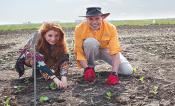
Mesophyll conductance doubles in soybean domestication, providing opportunity to be enhanced through selective breeding
RIPE researchers found that modern soybean plants have increased mesophyll conductance compared to ancestral soybean plants. Their work was recently published in Plant, Cell and Environment.
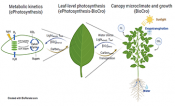
RIPE team models connection between enzyme activity and yields for the first time
A team from the University of Illinois has developed a modeling framework connecting enzyme activity related to photosynthesis to yield. This is the first time a model has tied the dynamic photosynthetic pathways directly to crop growth.
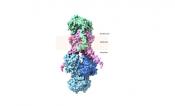
Scientists Engineer CO2-Boosting Protein to Supercharge Plant Photosynthesis
RIPE scientists have introduced a specialized protein complex into the chloroplasts of plants to deliver more carbon dioxide to the enzyme responsible for carbon fixation during photosynthesis. Their work was recently published in the Journal of Experimental Botany.
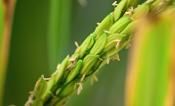
Changes Upstream: RIPE team uses CRISPR/Cas9 to alter photosynthesis for the first time
A RIPE team used CRISPR/Cas9 to increase gene expression in rice by changing its upstream regulatory DNA. Their work is the first unbiased gene-editing approach to increase gene expression and downstream photosynthetic activity and was recently published in Science Advances.
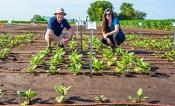
Engineered increase in mesophyll conductance improves photosynthetic efficiency in field trial
It is possible to engineer increased mesophyll conductance in plants according to new RIPE research! Scientists in the Long Lab at the University of Illinois found that by increasing porosity and decreasing the cell wall thickness they could increase CO2 diffusion and uptake in a model crop. Their work was published today in Plant Biotechnology Journal.

Researchers improve seed nitrogen content by reducing plant chlorophyll levels
Chlorophyll plays a pivotal role in photosynthesis, but it uses a lot of a plant's resources. RIPE researchers wondered if they reduced a plant's chlorophyll levels, if the plant would invest those resources in other areas, potentially improving nutritional quality or yield. Their findings were recently published in the Plant, Cell & Environment journal.
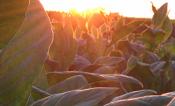
RIPE researchers determine chloroplast size unlikely option for improving photosynthetic efficiency
Chloroplast size affects photosynthetic efficiency in many ways, but is the current size optimal? A group of RIPE researchers have found, for the first time, that chloroplast size manipulations are unlikely to be an option for increasing crop photosynthetic efficiency.
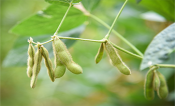
Unveiling the secrets of green pods: The role of soybean pods and seeds in photosynthesis
A team from the university of Illinois has discovered why soybean pods are green. They play a vital role in the plant’s photosynthetic process and significantly contribute to soybean yield!
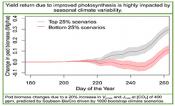
RIPE researchers model ‘link’ between improved photosynthesis and increased yield
A team from the University of Illinois has modeled improving photosynthesis through enzyme modification and simulated soybean growth with realistic climate conditions, determining to what extent the improvements in photosynthesis could result in increased yields.

RIPE Director Long to speak at TED2023 - POSSIBILITY
RIPE Director Steve Long has been announced as a speaker for TED2023: POSSIBILITY later this month.
Long will present his work on hacking photosynthesis to feed the world and tackle climate change.
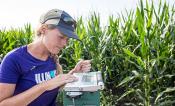
Meacham-Hensold hired as RIPE’s first Scientific Program Manager
RIPE has hired Katherine Meacham-Hensold as its first Scientific Program Manager. Meacham-Hensold will lead the coordination of RIPE’s field trials and plant transformation activities, manage the compilation of regular research updates, and serve as a liaison between RIPE and Bill & Melinda Gates Agricultural Innovations, in addition to continuing to conduct her own research.

RIPE researchers put plant protein mechanism into bacteria to help move forward 50 years of effort
ANU researchers have added components of plant chloroplasts to bacteria. This feat, 50 years in the making, allows them to analyze the proteins in greater detail in order to improve Rubisco, and eventually photosynthesis!
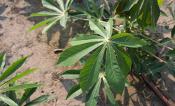
RIPE research proves potential for measuring root biomass throughout growing season
A team from the University of Illinois has proven how important it is to monitor the biomass of root crops throughout the season rather than relying on end-of-season measurements to analyze growth using ground penetrating radar.

Bill and Melinda Gates Agricultural Innovations extends RIPE funding with $34M grant
Bill & Melinda Gates Agricultural Innovations has awarded a grant of $34 million to the Realizing Increased Photosynthetic Efficiency project.
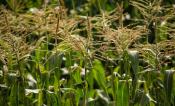
RIPE researchers show the cause of productivity loss in the fluctuating light of maize crop canopies
Illinois RIPE team shows increased bundle-sheath leakiness of CO2 during photosynthetic induction shows a lack of coordination between the C4 and C3 cycles.
RIPE researchers report faster screening of photoprotection in crops
In a recent study, published in JoVE, RIPE researchers from the University of Illinois and the University of Cambridge reported a high-throughput method for screening rates of NPQ relaxation in field grown plants.
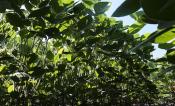
RIPE researchers prove bioengineering better photosynthesis increases yields in food crops for the first time ever
For the first time, RIPE researchers have proven that multigene bioengineering of photosynthesis increases the yield of a major food crop in field trials.
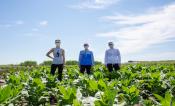
Researchers show potential for improved water-use efficiency in field-grown plants
By overexpressing a sugar-sensing enzyme, called hexokinase, in field-grown tobacco plants, researchers could improve intrinsic water-use efficiency without decreasing photosynthetic rates or biomass production.
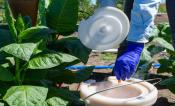
No photosynthetic improvement in ictB transformants in field-grown model crop
Illinois researchers, in collaboration with Essex, tested four tobacco ictB transformants for photosynthetic performance in field-based conditions.
Photosynthesis unaffected by increasing carbon dioxide channels in plant membranes
A team from the Australian National University (ANU) investigated the effects of increasing the amount of carbon dioxide channels in plant membranes.

RIPE’s Ting Lu elected to the 2022 class of the AIMBE College of Fellows
Bioengineering professor Ting Lu to the AIMBE 2022 class of the College of Fellows.
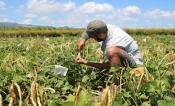
Collaborative RIPE team prove leaf width-biomass correlations in cowpea
In a collaboration between RIPE researchers and cowpea breeders from Ahmadu Bello University, and the International Institute of Tropical Agriculture, the width of cowpea leaves was found to correlate with above-ground biomass across diverse germplasm and environmental conditions.

BBC’s Follow the Food to feature RIPE researcher’s Rock Dust project
In BBC's Follow the Food's upcoming episode “Turning Back The Climate Clock,” the series focuses on the rock dust projects, led by Research Plant Physiologist for the U.S. Department of Agriculture, Agricultural Research Service (USDA-ARS) Carl Bernacchi.

Illinois team significantly improves BioCro software for growing virtual crops
A team from the University of Illinois has revamped the popular crop growth simulation software BioCro, making it a more user-friendly and efficient way to predict crop yield. The updated version, BioCro II, allows modelers to use the technology much more easily and includes faster and more accurate algorithms.
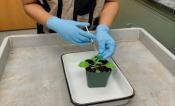
RIPE team develops toolkit for synthetic biology
A team from Louisiana State University (LSU) has developed a number of synthetic biology tools for plant geneticists to use to drive the expression of genes.
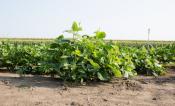
Fickle sunshine slows down Rubisco and limits photosynthetic productivity of crops
Researchers from Lancaster University are working to improve the sustainable productivity of key crops in sub-Saharan Africa have discovered a new imperfection in the way Rubisco functions in cowpea and believe this imperfection is likely shared with other crops.
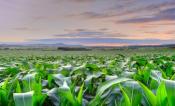
Stronger drought resistance of urban vegetation due to higher temperature, CO2 and reduced O3
Using data collected from urban environments, researchers at Illinois have been able to study dueling effects of climate change factors on vegetation response to drought.

The heat is on: RIPE researchers show ability to future-proof crops for changing climate
Research from Illinois and the USDA-ARS show that bypassing a photosynthetic glitch common to crops like soybean, rice, and wheat, can confer thermal protection under heat stress in the field.

RIPE researchers named on international ‘Highly Cited’ list
Four RIPE researchers are amongst 6,600 researchers around the world recognized by Clarivate as Highly Cited Researchers.
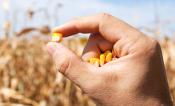
What doesn’t kill you makes you stronger: Illinois research shows crops have drought ‘memory’ to help reduce yield loss
Illinois researchers find that crops that experience drought conditions or extreme temperatures during their early stages of growth and survive are better able to deal with those same conditions later in their growth cycle.
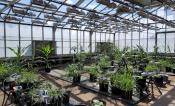
C4 bioenergy grass: working towards higher productivity under fluctuating light
In a recent study, published in GCB Bioenergy, a team from the University of Illinois evaluated limitations to photosynthetic efficiency of bioenergy grass species during fluctuating light.
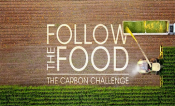
BBC’s Follow the Food to feature RIPE research
BBC World News’ Follow the Food is a series which explores how we can protect food security in the face of climate change and growing populations. The episode, “The Carbon Challenge,” will air this Friday and feature the RIPE project, RIPE’s Lisa Ainsworth, and our mission in addressing food insecurity.
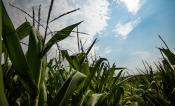
Dynamic photosynthesis model simulates 10-20 percent yield increase
A team from the University of Illinois has developed a model that treats photosynthesis as a dynamic process rather than an activity that either is or is not happening.

University of Illinois Urbana-Champaign Professor Ting Lu jointly presented with 1 million euro Future Insight Prize for converting waste into food
RIPE member and associate professor of bioengineering Ting Lu jointly received the 2021 Future Insight Prize to convert plastic waste into a safe source of food.
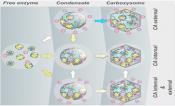
Rubisco proton production can enhance CO2 acquisition
Recently published in PNAS, RIPE members at ANU are gaining insight into possibly building Rubisco compartments in crops to increase yield productivity.
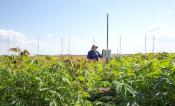
Innovative technologies in the agricultural space provides food and climate security
A team of researchers, including RIPE Director Steve Long, proposed possible technological solutions to our food security and climate change emergencies.
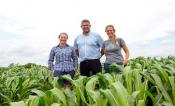
Not just CO2: Rising temperatures also alter photosynthesis in a changing climate
In a recently published review in the Journal of Experimental Botany, a team of scientists explored temperature impacts on crops across scales.
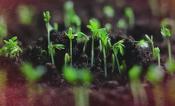
PBS NOVA BEYOND THE ELEMENTS: LIFE
In their three-part series examining everyday life through the lens of chemistry, PBS NOVA is premiering an episode featuring RIPE's work.
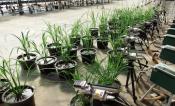
Flag leaves could help top off photosynthetic performance in rice
Illinois researchers found that some flag leaves of different varieties of rice transform light and carbon dioxide into carbohydrates better than others.
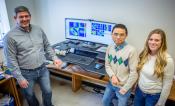
Light signal emitted during photosynthesis used to quickly screen crops
Illinois researchers reveal a new approach to estimating the photosynthetic capacity of crops to pinpoint their top-performing traits and speed up the process.
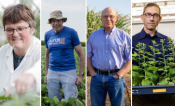
Photosynthesis researchers rank among 2020’s most influential scientists
Four RIPE researchers were among 6,167 researchers recognized by Clarivate as Highly Cited Researchers this year.
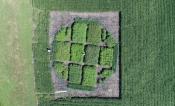
Cassava may benefit from atmospheric change more than other crops
A new study sheds light on how cassava will adapt to future levels of carbon dioxide: yields increase without diminishing nutritional quality.

The 'Enlightened' Future of Food
RIPE has established a modern plant phenotyping facility, set in a 9,000 square foot greenhouse to research sustainable ways to increase crop yields.
By: Heliospectra
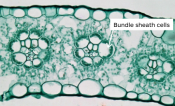
During COVID, scientists use computers to understand C4 photosynthesis when labs shut down
A team used computational approaches to understand how C4 crops express key enzymes in bundle sheath cells.
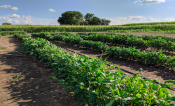
Scientists further cowpea research—boosting canopy CO2 assimilation, water-use efficiency
RIPE has analyzed how much variation exists within cowpea lines in light absorption and CO2 assimilation throughout the canopy.

Third breakthrough demonstrates photosynthetic hacks can boost yield, conserve water
RIPE has resolved two major photosynthetic bottlenecks to boost plant productivity by 27 percent in real-world field conditions.

Undergrad-led study suggests light environment modifications could maximize productivity
A new study looks into the cause of a maladaptation in C4 crops and found that altered light conditions, not leaf age, were their Achilles’ Heel.
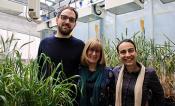
Scientists take a step closer to heat-tolerant wheat
Researchers found out how to trigger photosynthesis more efficiently at higher temperatures in wheat.

Lisa Ainsworth of USDA-ARS elected to the National Academy of Sciences
RIPE research leader Lisa Ainsworth has been elected to the National Academy of Sciences—one of the highest honors that a scientist can receive.
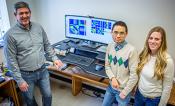
Technology to screen for higher-yielding crop traits is now more accessible to scientists
To drive progress toward higher-yielding crops, our team is revolutionizing the ability to screen research plots for key traits.
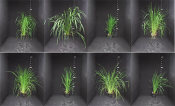
Photosynthesis varies greatly across rice cultivars—natural diversity could boost yields
Our team found a 117% difference between how rice plants harness fluctuating light to fix carbon dioxide into food, suggesting a new trait for selection.

Meet some of RIPE's wonder women
In celebration of International Women's Day, the RIPE project is shining a spotlight on some of our female scientists.
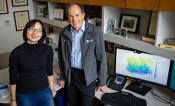
Boost soybean yields by adapting photosynthesis to fleeting shadows, according to model
Soybeans may lose 13 percent of their productivity grappling with changes in light.

Stephen Long invested as the Stanley O. Ikenberry Chair Professor of Plant Biology and Crop Sciences
Stephen Long has been invested as the Stanley O. Ikenberry Chair Professor of Plant Biology and Crop Sciences, one of the most distinguished honors at Illinois.

RIPE researchers among 2019’s most influential scientists
This year RIPE has four team members recognized as Highly Cited Researchers by the Web of Science group.

Breaking ground on phenotyping facility at the University of Illinois Research Park
Representatives from Illinois and the Gates Foundation broke ground on a state-of-the-art phenotyping facility.
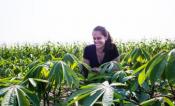
Scientists find ways to improve cassava, a ‘crop of inequality’ featured at Goalkeepers
A new study has identified opportunities to increase the yields of the staple root crop cassava.
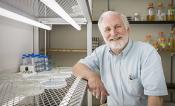
Missing link in algal photosynthesis found, offers opportunity to improve crop yields
Our team discovered a missing link in the photosynthetic process of green algae that could help boost crop productivity.

Improved model could help scientists better predict crop yield, climate change effects
Our team created a computer model of how microscopic leaf pores open in response to light to create better virtual plants.

Scientists stack algorithms to improve predictions of yield-boosting crop traits
RIPE researchers have stacked together six algorithms to more accurately predict high-yielding crop traits.

New technology allows scientists to measure photosynthesis much more quickly
A new method can quickly capture improvements to plants' natural capacity to harvest energy from the sun.

Long elected to the National Academy of Sciences
University of Illinois crop sciences and plant biology professor Stephen P. Long is one of 100 new members elected to the National Academy of Sciences.
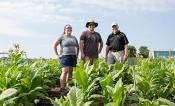
Scientists engineer shortcut for photosynthetic glitch, boost crop growth by 40 percent
The RIPE project has engineered a shortcut for photorespiration—an energy-expensive process—and increased crop productivity by 40 percent.

RIPE researchers rank among world’s most influential
The Clarivate Analytics Highly Cited Researchers list for 2018 includes five team members from Realizing Increased Photosynthetic Efficiency (RIPE).
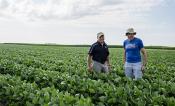
RIPE project receives additional $13 million to accelerate progress to redesign photosynthesis
The Bill & Melinda Gates Foundation increases RIPE project investment to complement support from FFAR and DFID to improve yields for farmers worldwide.
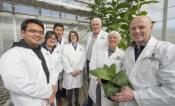
Blue-green algae promises to help boost food crop yields
In a breakthrough, RIPE has engineered tiny carbon-capturing engines from blue-green algae into plants to significantly boost crop yields one day.
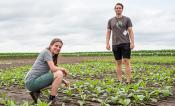
Scientists boost crop production by 47 percent by speeding up photorespiration
RIPE has increased crop production 27 to 47 percent by speeding up a process called photorespiration.
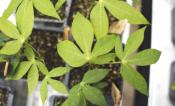
Cassava breeding hasn’t improved photosynthesis or yield potential
RIPE found unimproved varieties of cassava photosynthesize better than those selected for improved pest and disease resistance.

Scientists engineer crops to conserve water, resist drought
As reported in Nature Communications, RIPE has improved how a crop uses water by 25 percent—without compromising yield—by altering the expression of one gene.
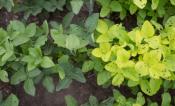
Light green plants save nitrogen without sacrificing photosynthetic efficiency
RIPE scientists designed plants with light green leaves to allow more light to penetrate the crop canopy to increase light-use efficiency and yield.
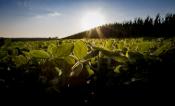
Hacking evolution, screening technique may improve most widespread enzyme
Scientists have developed tools to simulate millions of years of evolution in days to help plants adapt to changing conditions.
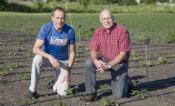
The time is RIPE to transform agriculture and feed the world
University of Illinois receives grant from the Bill & Melinda Gates Foundation, FFAR, and DFID to catalyze photosynthetic improvements, increase yields for farmers worldwide
Cowpea protected from a devastating pest, free for smallholder African farmers
Researchers have engineered cowpea—one of the most important sources of vegetable protein for rural families in sub-Saharan Africa—to produce the Bacillus thuringiensis (Bt) protein.
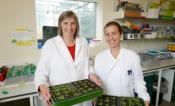
Incremental discovery may one day lead to photosynthetic breakthrough
While we have modeled the more-than-100 major steps of photosynthesis, scientists are still discovering the purpose of proteins that can be engineered to increase yield. RIPE has uncovered secrets about another protein, CP12—the full understanding of which may provide an additional route to boost yields in the future.
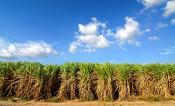
New 3D model predicts best planting practices for farmers
As farmers survey their fields this summer, several questions come to mind: How many plants germinated per acre? How does altering row spacing affect my yields? Does it make a difference if I plant my rows north to south or east to west? Now a computer model can answer these questions by comparing billions of virtual fields with different planting densities, row spacings, and orientations.

Mark your calendar for the 2017 Food & Fuel Field Day
Media, industry, and policymakers are invited to see the plants that could help feed and fuel the world by 2050 and meet the scientists who engineered them at the 2017 Food & Fool Field Day on Thursday, July 13, at the University of Illinois Energy Farm.

RIPE’s Susanne von Caemmerer elected fellow of the Royal Society
Plant scientist Professor Susanne von Caemmerer from The Australian National University (ANU) has been elected a Fellow of the Royal Society in the UK, the longest standing scientific academy in the world.

RIPE Deputy Director elected to the National Academy of Sciences
RIPE Associate Director Donald Ort is among four University of Illinois professors elected to the National Academy of Sciences this year.
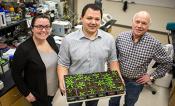
Newly characterized protein has potential to save U.S. farmers millions annually
Instead of turning carbon into food, many plants accidentally make a plant-toxic compound during photosynthesis that is recycled through a process called photorespiration. University of Illinois and USDA/ ARS researchers report in Plant Cell the discovery of a key protein in this process, which they hope to manipulate to increase plant productivity.
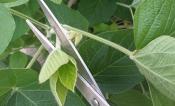
Soybean plants with fewer leaves yield more
Using computer model simulations, scientists predicted fewer leaves could boost yields and confirmed it works in real-world field trials—increasing soybean production by 8%. This yield gain, which far surpasses the one percent average, is needed to produce 70-100% more food by 2050 to feed an estimated 9.7 billion people.
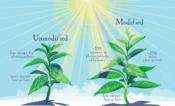
Scientists tweak photosynthesis and boost crop yield, proving it can be done
Researchers report in the journal Science that they can increase plant productivity by boosting levels of three proteins involved in photosynthesis.

Researchers root for more cassava research
Cassava makes up nearly 50 percent of the diet in parts of sub-Saharan Africa, where populations are projected to increase by more than 120% in the next 30 years. With stagnant yields for the last half-century, scientists realize the need to focus their efforts on this crop now.
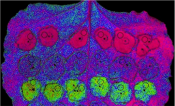
Rapid gene analysis method accelerates photosynthesis studies
In a recent study, researchers used a rapid screening technique that genetically engineers plants--in real time--to investigate how to help plants realize their full potential on cloudy days.
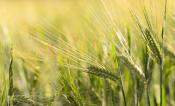
Towards smarter crop plants to feed the world
Plant scientists at Lancaster University, with support from the University of Illinois, have made an important advance in understanding the natural diversity of a key plant enzyme which could help us address the looming threat of global food security.
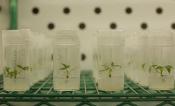
One crop breeding cycle from starvation
In the race against world hunger, we’re running out of time. By 2050, the global population will have grown and urbanized so much that we will need to produce 87 percent more of the four primary food crops – rice, wheat, soy, and maize – than we do today.
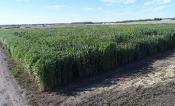
Enzymes with the potential to increase wheat yields
Wheat yields could be significantly increased thanks to varieties with a superior form of a common enzyme, according to new RIPE research.
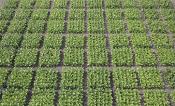
Molecular method promises to speed development of food crops
Modern plant breeders wait weeks or months, not centuries, to discover what the literal fruits of their labors might be; now, a study led has explored the strengths of a molecular method that reduces this wait time to a few days.
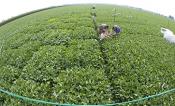
Team calls for an integrated field research network in the Midwest to address climate adaptation
Despite record-high yields of corn and soybean across the United States in 2014, climate scientists warn that rising temperatures and future extreme weather may soon put crop yields like this in danger.
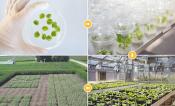
Report: Photosynthesis hack needed to feed the world by 2050
Using high-performance computing and genetic engineering to boost the photosynthetic efficiency of plants offers the best hope of increasing crop yields enough to feed a planet expected to have 9.5 billion people on it by 2050, researchers report in the journal Cell.
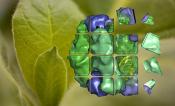
A protein “chaperone” that is key to achieving enhanced crop yield
Australian scientists have found a way to improve production of an enzyme essential to plant growth. The discovery advances efforts to improve global food security that aim to increase the yields of some of our most important staple crops, such as wheat, cotton and rice.
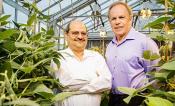
Computer model amounts to a lot more than a hill of beans
Crops that produce more while using less water seem like a dream for a world with a burgeoning population and already strained food and water resources.

Team models photosynthesis and finds room for improvement
Teaching crop plants to concentrate carbon dioxide in their leaves could increase photosynthetic efficiency by 60 percent.

Team models photosynthesis and finds room for improvement
Teaching crop plants to concentrate carbon dioxide in their leaves could increase photosynthetic efficiency by 60 percent.
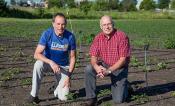
University of Illinois to improve crop yield through photosynthesis in a new global effort
The University of Illinois at Urbana-Champaign has received a five–year, $25-million grant from the Bill & Melinda Gates Foundation to improve the photosynthetic properties of key food crops, including rice and cassava.
